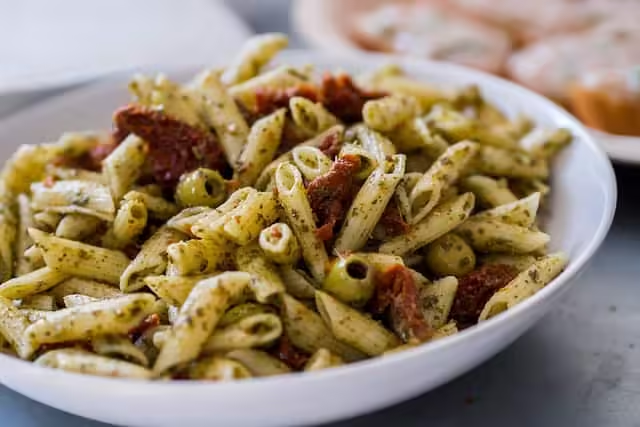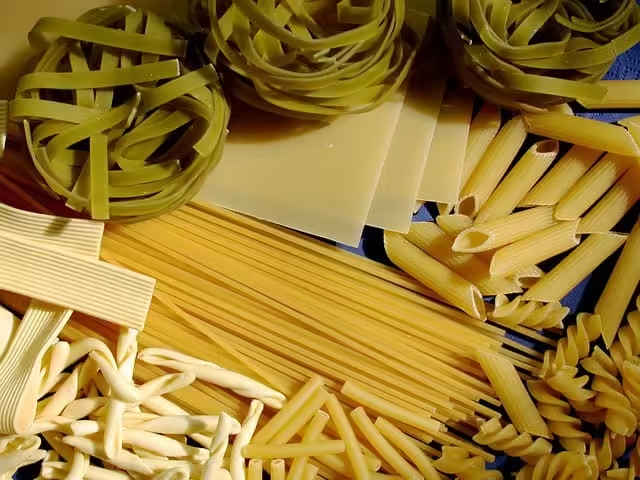Types of Pasta ! Pasta is a beloved staple in many cuisines around the world, especially in Italian cooking. With its versatility and variety, pasta can be paired with countless sauces and ingredients, making it a favorite for home cooks and gourmet chefs alike. In this food stories, we will explore the different types of pasta, their unique shapes, and the best ways to enjoy them.
Basics of Pasta
Pasta is primarily made from flour and water, and sometimes eggs. It comes in two main forms: dry pasta and fresh pasta.
- Dry Pasta: This type is made from semolina flour and water, then dried to create a firm texture. It can be stored for long periods and is perfect for hearty dishes.
- Fresh Pasta: Made with flour and eggs, fresh pasta has a softer texture and cooks more quickly than dry pasta. It is often used in lighter dishes, allowing the flavors of sauces to shine.
Types of Pasta
According to Pasta Evangelists There are hundreds of pasta shapes, each designed to complement specific sauces and dishes. Below, we’ll categorize the most common types of pasta into long, short, and specialty shapes.
Long Pasta
Long pasta is perfect for twirling around your fork and pairs well with a variety of sauces.
- Spaghetti: Perhaps the most recognized type of pasta, spaghetti is long and thin. It is incredibly versatile, often served with tomato sauce, meatballs, or olive oil and garlic.
- Fettuccine: This flat, ribbon-like pasta is slightly wider than spaghetti. It is commonly paired with creamy sauces, such as Alfredo, due to its ability to hold onto rich flavors.
- Linguine: Similar to fettuccine but narrower, linguine is often served with seafood dishes, as its shape complements lighter sauces.
- Bucatini: A thick, hollow spaghetti, bucatini is great for hearty sauces. The hollow center allows the sauce to cling to the pasta, making every bite flavorful.
Short Pasta
Short pasta is typically easier to eat and often used in baked dishes or salads.
- Penne: This tube-shaped pasta comes in smooth or ridged varieties. Penne is excellent for holding onto chunky sauces, making it a popular choice for baked pasta dishes.
- Fusilli: Twisted and spiral-shaped, fusilli is perfect for lighter sauces and salads. The shape helps trap bits of vegetables and meat.
- Rigatoni: Larger and ridged, rigatoni is ideal for thick, hearty sauces. It is commonly used in baked dishes like pasta al forno.
- Orzo: Shaped like rice, orzo is often used in soups or salads. It can also be cooked like risotto for a creamy side dish.

Specialty Pasta
These unique pasta shapes add flair to any meal.
- Gnocchi: While technically a dumpling, gnocchi is often categorized with pasta. Made from potatoes, these soft pillows are delicious with butter, sage, or tomato sauce.
- Lasagna: Flat sheets of pasta used in the classic baked dish of the same name. Lasagna noodles are layered with meat, cheese, and sauce for a hearty meal.
- Orecchiette: Meaning “little ears” in Italian, this pasta is shaped like small cups. It pairs beautifully with chunky sauces, especially those containing vegetables.
- Tortellini: Stuffed pasta that is typically filled with cheese, meat, or vegetables. Tortellini is often served in broth or with a light sauce.
Cooking Tips for Different Types of Pasta
When cooking pasta, it’s essential to consider the type of sauce you plan to use. Here are some tips:
- Long Pasta: Best with light, smooth sauces. Consider pairing spaghetti with marinara or fettuccine with creamy Alfredo.
- Short Pasta: Works well with chunky sauces or baked dishes. Try penne with a robust meat sauce or fusilli in a fresh pesto.
- Specialty Pasta: Often best with simple sauces that enhance their unique flavors. Gnocchi is delightful with a sage butter sauce, while tortellini shines in a light broth.
Conclusion
With such a wide variety of types of pasta available, there’s a perfect shape for every dish and occasion. Whether you prefer the classic spaghetti or the unique gnocchi, pasta offers endless possibilities for delicious meals. So next time you’re in the kitchen, experiment with different pasta shapes and sauces to create your perfect dish. “Buon appetito” in Italian and “Enjoy your meal” in English.
Thanks for reading.
You might be like to read also Pine Nuts: Nature’s Tiny Powerhouse











